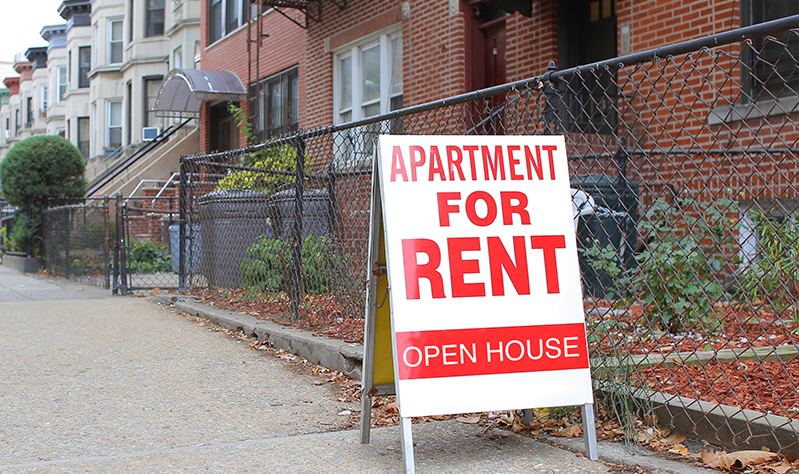A half-day workshop to discuss government response to climate change in Croton, Cortlandt and Buchanan was held on October 18, 2018. Attending that day were Ms. Gallelli and a “who’s who” of Croton government, gathered with officials from Buchanan and Cortlandt. This included top officials from the Village of Croton and also from the Croton-Harmon school district.
A report of that meeting was issued in January 2019, and on page 13 of the report it says something of great relevance to the rezoning of Brook Street and Riverside Avenue: “Village of Croton to determine buyout options and implications for North/South Riverside Ave and Brook Street, as well as the possibility of levees.”
Wow.
At the same time the Board of Trustees is talking about lining Riverside and Brook Street with apartments, our Deputy Mayor, Village Manager, Village Engineer, Chief of Police, Superintendent of Public Works, and a Croton resident identified as being a member of the Sustainability Committee (he is also a member of the Business Development Committee) are having a discussion about “buyouts of the properties in this area over the long term.” (Report at page 8)
At the March 21, 2019 rezoning presentation, there was discussion of how rezoning would impact the portion of North Riverside near High Street. Yet none of the Board of Trustees, nor the Village Manager, nor our $75,000 consultant saw fit to mention that last fall they were at a workshop which concluded that one of our “Medium societal priorities” is “Evaluate options for the Washington Engine House on High Street, considering new sea level rise and flooding projections.” (Report at page 13)
When the Village Manager and other notables want to discuss the possible buyout of private property by the government, this should be done at a regular meeting of the Board of Trustees. This is particularly true given the fact that the discussion involved a particular limited area (Brook Street).
It is true that under NYS Open Meetings Law section 105(1)(h) there is a provision for the Board of Trustees to enter into Executive Session when discussion would “substantially affect the value [of real property]” In this instance, talk of “buyouts” of private land was discussed with at least one public citizen (the Sustainability Committee member) present. In addition to the Croton politicians and officials in attendance, there were residents of Cortlandt and Buchanan. This was not a discussion limited to the Board of Trustees. Moreover, the workshop generated a report.
Croton’s village government did not put the report online for the public; given the pervasive secrecy of our Croton Board of Trustees that is not news. Fortunately Ms. Pugliese runs a transparent government and posted the workshop report on the Cortlandt website.
The report indicates that the foundation of the Croton input was based on a “recently completed Storm Study Group.” I did not even know Croton had a “Storm Study Group” since this is one of those quasi-secret groups like the “North Riverside Neighborhood Zoning Working Group” that was instrumental in the rezoning plan first presented to the public on March 21.
The “Storm Study Group” documents and reports should be made public on the Village of Croton website. So should the records of the “North Riverside Neighborhood Zoning Working Group.” This is essential information needed for Croton residents to evaluate the planned rezoning.
Since the village is talking about “exploring the possibility of having levees” in the Hudson (Report, page 13), this issue needs to be resolved prior to rezoning. Once routinely used, levees have fallen out of favor. There are cases (such as New Orleans) where millions of people will either have to move or risk death without levee construction.
Croton is not New Orleans.
The area which would be protected by any levee is presumably a portion of North Riverside. With the notable exception of Brook Street, that area currently has a low density of residents. While Croton’s Board of Trustees is sending Deputy Mayor Gallelli and Village Manager King to a workshop discussing levee construction to protect parcels along North Riverside, they are simultaneously putting forth a rezoning designed to encourage multi-story residential apartments along North Riverside. This is insane.
Levees have significant deleterious impact on the environment. They also can change the floodplain, in fact that is their primary purpose. There are good reasons why levees have fallen out of favor with engineers and environmentalists specializing in riparian ecosystems.
Croton is considering levees at the same time it is seeking to increase population density in the floodplain the levees would protect. This is specifically what not to do.
The Association of State Floodplain Managers notes that levees “are inappropriate as a means of protecting undeveloped land for proposed development” and cautions that “given enough time levees will either be overtopped or will fail—leading to severe flood impacts on an unsuspecting population. Unlike a natural flood, levee failure flooding is often rapid, forceful, extremely damaging, and occurs with little or no warning.”
Because a levee would change the course and volume of Hudson River water flow, the residents of Half Moon Bay should be particularly concerned. In the report of the October 2018 conference that discussed “buyouts” of landlords on Brook Street and Riverside, there is no contemplation of “buying out” the condo owners at Half Moon Bay.
The report identifies Half Moon Bay residents as a “vulnerable” population (page 6), and says that “emergency and evacuation planning for vulnerable populations and neighborhoods, including the Half Moon Bay Condos in Croton” is a “high societal priority” (Report, page 11) but then leaves Half Moon Bay residents to their own devices: “Since the Half Moon Bay Condos are privately owned, the municipalities should communicate with the owners, and determine if they have resilience and emergency plans in place.” (Report, page 12)
I think our neighbors at Half Moon Bay do indeed “have resilience.” I also think they are residents of Croton and deserving of the same rights and benefits as anyone else. So what if the property is “privately owned?” That is true of the property along Brook Street and North Riverside, and we are discussing “buyouts” and levees for them. Indeed it is quite possible that any levee to protect parts of Brook and North Riverside might increase the risk to residents of Half Moon Bay.
If for no other reason than cold self-interest, we should care about Half Moon Bay. It is a significant part of the village’s taxable land and the residents contribute to Croton’s economy. Rising water levels and risk of flooding at Half Moon Bay is not a trivial matter.
Discussion of “potential buyouts of the properties in this area over the long term” is not something that the Croton Board of Trustees mentions when it tells us about the wonderful things that will come from rows of apartment buildings along Riverside. Any “buyouts of properties” would have to be done voluntarily or by eminent domain. In either case, the cost is going to be based on property value. If you line North Riverside with new construction, it is going to be exponentially more expensive to conduct any “buyouts of the properties.”
There is also a liability aspect. The Village Manager, Deputy Mayor, and Village Engineer have now been at a workshop discussing the fact of climate change and the current and projected impact. They have talked about “emergency plans” at the Croton Yacht Club (Report, page 13) and Half Moon Bay, and the risk to the Washington Engine firehouse.
When the municipality has actual knowledge of projected risk to human life, and is so concerned that it is talking about buying out properties and asking residents at Half Moon Bay about their emergency plans, how can the municipality possibly take an action (rezoning) for the express purpose of increasing population density in the most dangerous part of the village?
Croton’s Board of Trustees is willing to spend $1.5 million to turn Gouveia into an office campus for the Recreation Department, willing to spend $5.2 million on a building for the Deptartment of Public Works, willing to spend $4.26 million to give the Police Department a grand new space.
That same Board of Trustees doesn’t want to talk about how much needs to be spent to secure the drinking water supply by “[r]aising equipment, such as the intake mechanisms, and incorporating resilient design” at “the drinking water well fields and controls along the Croton River in the Village of Croton.” (Report, page 12)
As Chair of Croton’s Water Control Commission, Mr. Greenbaum was in attendance at the October climate change workshop. So was Croton Superintendent of Public Works Frank Balbi. It would be helpful if the WCC and the Croton DPW told us about plans to deal with the impact of climate change on our drinking water supply infrastructure, as well as whether the WCC and DPW feel that our existing water system can accommodate the influx of new apartments resulting from rezoning.
Maintaining water supply quality is a critical matter. If we draw water out faster than the aquifer can be replenished, problems can result including increased particulate matter in our drinking water. Constructing new apartments by definition will increase draw on our aquifer.
Can our water supply stand the stress of hundreds of new residents? I don’t know. Since Mr. Olver is liason to the WCC, perhaps he can enlighten us.
My guess is that when Croton issues more of Mr. Pugh’s beloved Bond Anticipation Notes, it will not disclose the knowledge of projected flooding, nor the fact that our top village officials went to a conference and discussed “potential buyouts of the properties” nor the risk that Half Moon Bay may be wiped out, or the environmental risks which will impact our drinking water system.
On July 10, 2017 Croton released a 169 page Comprehensive Plan. Perhaps somewhere buried in there is a discussion about the effect of climate change and rising water levels in the Hudson River, but I couldn’t find it and I even read the appendix.
On March 21, 2019 Croton released a rezoning plan developed with the aid of people including working group members Ted Brumleve, Paul Doyle, and Ann Gallelli. Those very same people participated in the 2017 Comprehensive Plan. Again, there was no discussion of the impact of climate change on the North Riverside/Brook Street floodplain.
Croton should go back and revise both the Comprehensive Plan and the rezoning plan. Croton should not encourage multi-story residential buildings in an area which Croton officials acknowledge is going to be eventually flooded.
At the March 21 public meeting, our $75,000 consultant would not say how many new units the rezoning plan would allow along North Riverside and Brook Street. Nor did the consultant say anything about the effect of climate change on the area which is to be rezoned. Nor did our Police and EMS people tell us how they would handle a natural disaster in the Riverside flood plain.
At the public meeting on Tuesday, June 18 (7:30 p.m. at the Harmon firehouse), our politicians need to stand up and tell us the truth. Climate change is real, and to ignore the science for the sake of building apartments is not only foolish. It is putting lives at risk.
Paul Steinberg
Click here to see the full report discussed in this letter.




















